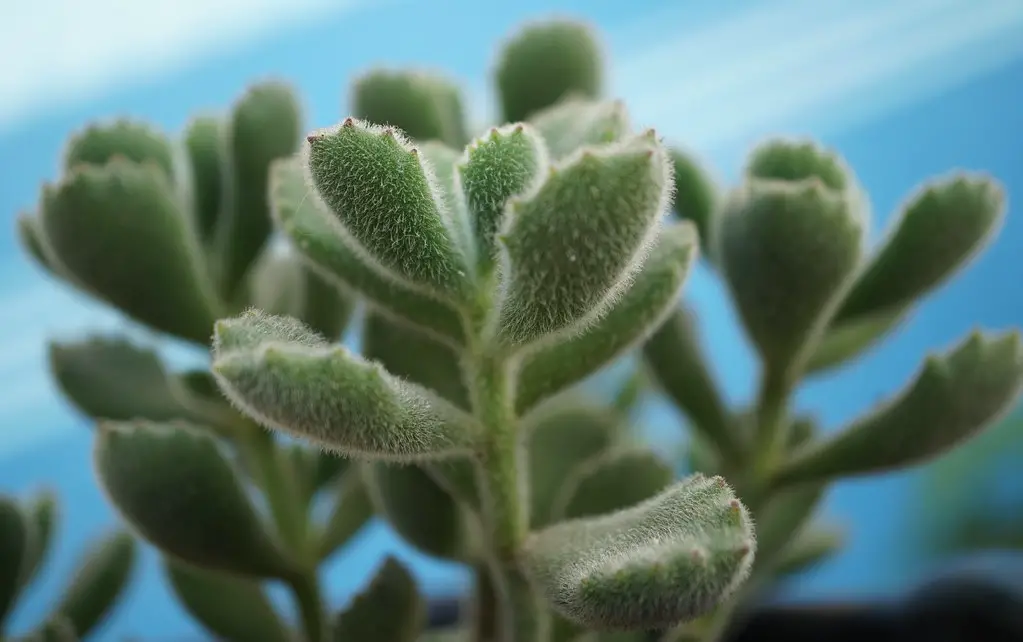Bear Paw, scientifically known as Cotyledon tomentosa, is a charming succulent renowned for its fuzzy, paw-like leaves. Originating from South Africa, it has become a favorite among houseplant enthusiasts for its unique appearance and easy care.
The plump, furry leaves are not only visually striking but also functional. Covered in tiny hairs, they help the plant retain moisture, allowing it to thrive in arid environments. Each “paw” typically has three “claws,” making it resemble a bear’s paw, hence the common name.
Growing Bear Paw requires understanding its specific needs, such as sunlight, soil, and watering. Whether you’re a novice or seasoned gardener, Bear Paw can be a delightful addition to your indoor or outdoor garden. Let’s explore the characteristics and care requirements of this intriguing plant.
| Attribute | Details |
|---|---|
| Common Names | Bear Paw, Bear’s Paw |
| Botanical Name | Cotyledon tomentosa |
| Family | Crassulaceae |
| Plant Type | Succulent |
| Mature Size | 6-12 inches tall |
| Sun Exposure | Full sun to partial shade |
| Soil Type | Well-draining, sandy |
| Hardiness Zones | 9-11 |
| Native Area | South Africa |
Bear Paw Care
Caring for Bear Paw is relatively simple, making it an excellent option for beginners. Its succulent nature means it’s forgiving to occasional neglect. However, providing the right balance of light, water, and soil will ensure a healthy, thriving plant.
The key to a happy Bear Paw is not overwatering, which can lead to root rot. Providing a well-draining soil mix and letting the soil dry out between waterings will prevent this issue. Regularly inspecting for pests and providing ample sunlight can also contribute to its success.
Light Requirement for Bear Paw
Bear Paw prefers full sun to partial shade, needing around 6 hours of sunlight daily. While it can tolerate some shade, insufficient sunlight may lead to leggy growth. Indoors, placing it near a south-facing window is ideal.
Soil Requirements for Bear Paw
A well-draining soil mix is essential for Bear Paw to prevent root rot. Using a cactus or succulent mix combined with sand or perlite will provide the necessary drainage. A pH level of around 6.0 is ideal.
Water Requirements for Bear Paw
Watering should be done sparingly for Bear Paw. Allow the soil to dry out between waterings, and then water thoroughly. During the winter, the plant goes into dormancy, and watering should be reduced even further.
Temperature and Humidity
Bear Paw thrives in temperatures between 60-80°F (15-27°C). While it can tolerate brief periods of cold, it’s sensitive to frost. In terms of humidity, low to moderate levels are suitable, reflecting its natural arid habitat.
Fertilizer
Bear Paw requires minimal fertilization. A balanced, water-soluble fertilizer diluted to half strength can be applied during the growing season, from spring to late summer. Avoid over-fertilizing, as this can lead to weak growth.
Pruning Bear Paw
Pruning is usually not required for Bear Paw. However, removing dead or damaged leaves can promote healthy growth and appearance. Always use clean, sharp tools to avoid spreading diseases.
Propagating Bear Paw
Bear Paw can be propagated from leaves or stem cuttings. Simply remove a healthy leaf or stem, let it dry for a few days, and then place it in well-draining soil. Water sparingly until roots develop.
How To Grow Bear Paw From Seed
Growing Bear Paw from seed is possible but requires patience. Sow the seeds in well-draining soil and keep them moist. Provide warmth and sunlight, and germination should occur within a few weeks.
Common Pests & Plant Diseases
Mealybugs
These can be removed with alcohol-soaked cotton swabs or treated with insecticidal soap.
Root Rot
Caused by overwatering, ensure proper drainage and watering habits to prevent this disease.
Common Problems With Bear Paw
Drooping Leaves
Often a sign of overwatering, reduce watering and check for root rot.
Brown Tips
Caused by underwatering or low humidity, adjust watering practices accordingly.
Pro Tips
- Avoid touching the leaves excessively, as this can remove the delicate fuzz.
- Repot every 2-3 years to refresh the soil and inspect for root health.
- Provide good airflow to reduce the risk of fungal diseases.
- Water in the morning to allow the plant to dry out during the day, mimicking its natural environment.
- Experiment with different lighting to find the sweet spot that keeps your Bear Paw compact and healthy.




